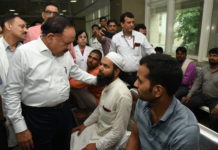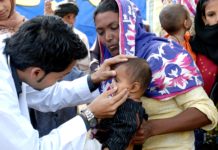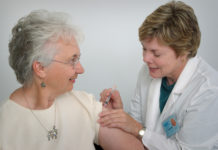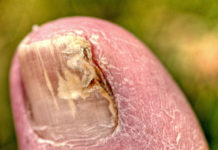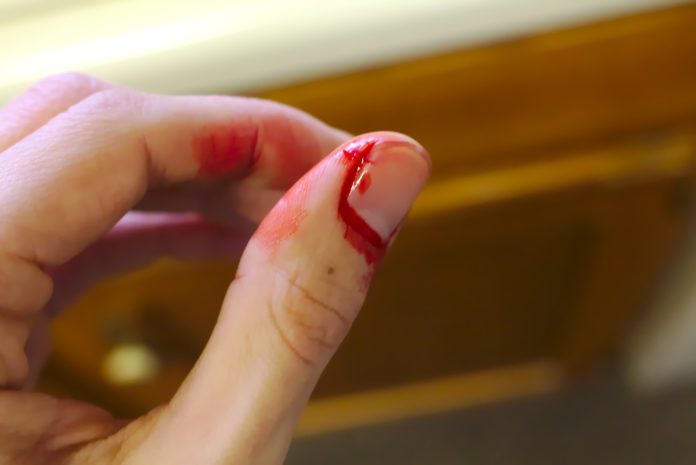
In the spirit of sharing of knowledge – the theme this World Hemophilia Day – we at Medibulletin have put together an explainer on Hemophilia
Once known as the Royal Disease thanks to its association of some of the prominent European dynasties, hemophilia – or the bleeding disease – has for decades had an aura and a mystery around it. For patients suffering from it though is just an incredibly painful disease.
April 17 is celebrated as World Hemophilia Day and this year’s theme is “Sharing Knowledge Makes us Stronger”. The World Federation of Hemophilia (WFH), Hemophilia Federation (India) and many other organizations associated with blood clotting disorders will be celebrating how knowledge and awareness is vital when it comes to management of these disorders.

“World Hemophilia Day is a wonderful opportunity for our community to make its presence felt,” explains Alain Weill, President of the WFH. “Our focus this year is on Sharing Knowledge because we are convinced that knowledge and education are key drivers for stronger support for patients in our community.”
In the spirit of that sharing of knowledge, we at Medibulletin have put together an explainer on Hemophilia – the disease that affected among others the ruling dynasties of England and Russia. In Russia it was the illness of the heir to the throne Tsareveich Alexei that led to the rise of the mystic healer Rasputin.
The disease affected among others the ruling dynasties of England and Russia. In Russia it was the illness of the heir to the throne Tsareveich Alexei that led to the rise of the mystic healer Rasputin
What is Hemophilia?
It is an inherited disorder of blood clotting. “Inherited” means that the disease is passed from parents to children through their genes. Normally in response to bleeding, there are substances in blood called clotting factors which mix with blood cells to make aggregates or clots which causes bleeding to stop. In hemophilia, people have deficiency of these clotting factors.
What are the types of hemophilia?
Two main types are hemophilia A and B. In Hemophilia A clotting factor VIII is deficient and in Hemophilia B clotting factor IX is lacking. Hemophilia A occurs in 1 in 5000 live births while Hemophilia B occurs in about 20000 live births.
Hemophilia is X linked that is it is inherited from the mother though males are generally affected.
A family history of maternal uncles or other male affected relatives on the mother’s side are often present. Women are normally carriers of the disease as they have two X chromosomes (one unaffected chromosome) – both chromosomes have to have the faulty hemophilia gene for the person to become a full blown case. Carriers don’t suffer from hemophilia but can pass on the disease to their sons. Though in many cases family history is not available as most of them are due to mutations (spontaneous changes) in their genes.
Hemophilia A and B along with von Willebrand disease ( deranged clotting due to platelet adhesion defect which is mostly seen in females) make up most cases of bleeding disorders. Rare inherited bleeding disorders due to deficiencies of other factors like II (prothrombin), V, VII, X, XI, XIII, and fibrinogen are also known.
Hemophilia is diagnosed when people have less than or equal to 40% of the normal amount of clotting factors A or B in blood.
What happens in Hemophilia?
Hemophilia patients bleed for a longer time than others after any injury, injections, tooth extractions or operations. They may also bleed spontaneously inside the joints (like knees, ankles, and elbows) or muscles and any closed internal spaces (like brain, spine and stomach) in the body in severe cases of Hemophilia ( less than 1% of clotting factors being present ). This bleeding can damage the joints and cause permanent disability while internal bleeding (head, abdomen) may be life threatening.
How common is Hemophilia?
According to Hemophilia Federation India, there are about 19858 people with Hemophilia in India (data till 31st March 2017) of which 80% is Hemophilia A, 12% is Hemophilia B and about 3% is attributable to von Willebrand disease (VWD). But it is only the tip of the iceberg as most people with Hemophilia in India are undiagnosed and have limited access to healthcare due to lack of basic knowledge about bleeding disorders. The burden of untreated Hemophilia cases and disability is high.
The annual global survey of World Federation of Hemophilia had in 2016 reported that almost 50 percent of the world’s hemophilia population lives in India and over 70 per cent of PwH (People with Hemophilia) do not have adequate knowledge or access to treatment.
The 2016 Report included data on more than 295,000 people with bleeding disorders in 113 countries. In 2018 there are about 440000 people living with hemophilia in the world.
What is the treatment of hemophilia?
The main treatment for hemophilia is called factor replacement therapy. The deficient factor is replaced by concentrates of clotting factor VIII (for hemophilia A) or clotting factor IX (for hemophilia B). These factors can be collected and purified from blood plasma (plasma derived) – the non cellular component of blood – or they can be produced artificially in a laboratory (recombinant). They are given to the patient as an injection through a vein (intravenous) directly into the blood.



